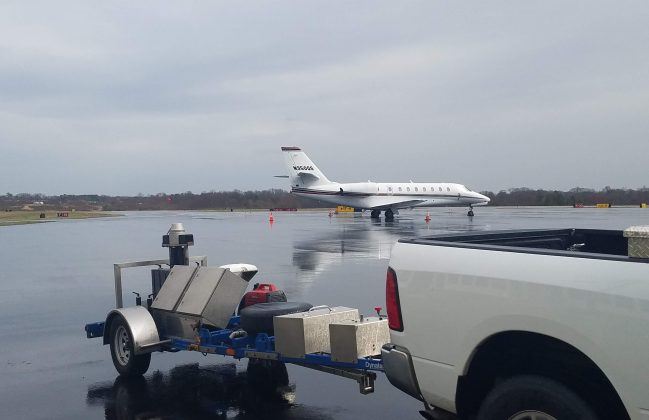Smith Reynolds Airport Runway 15-33 Pavement Testing and Recommendations
In early 2020, Smith Reynolds Airport wanted to evaluate Runway 15-33 for its current condition and rehabilitation recommendations. S&ME provided pavement design and engineering services in the form of pavement forensic testing, structural evaluation, and rehabilitation recommendations.
Pavement field testing consisted of Ground Penetrating Radar (GPR) to determine the pavement layer thicknesses. Pavement coring was conducted to calibrate the GPR testing and provide accurate layer thicknesses the full width and length of the runway. Kessler Dynamic Cone Penetrometer Tests (KDCP) were collected to determine the subgrade support conditions. The GPR, coring, and KDCP data were incorporated with Falling Weight Deflectometer (FWD) testing data to evaluate the pavement structural capacity of the runway.
Utilizing the field-testing data, anticipated aircraft traffic counts, and the FAA
Pavement Design software FAARFIELD, S&ME provided pavement rehabilitation recommendations for Runway 15-33. The design evaluation demonstrated the structural capacity of the existing pavement system was adequate to support anticipated aircraft trafficking. The deteriorating surface conditions were contributed to reflective cracking from the underlying concrete pavement along with seasonal environmental effects on exposed surface cracks. Recommendations included milling and replacing the milled-out asphalt to varying depths. At a minimum, mill and fill seals existing cracks and provides a new surface with greater rideability. Mill and fill at greater depths will mitigate the return of reflective cracking to the surface proportionally to the depth of the replacement.

